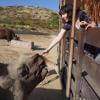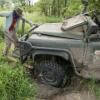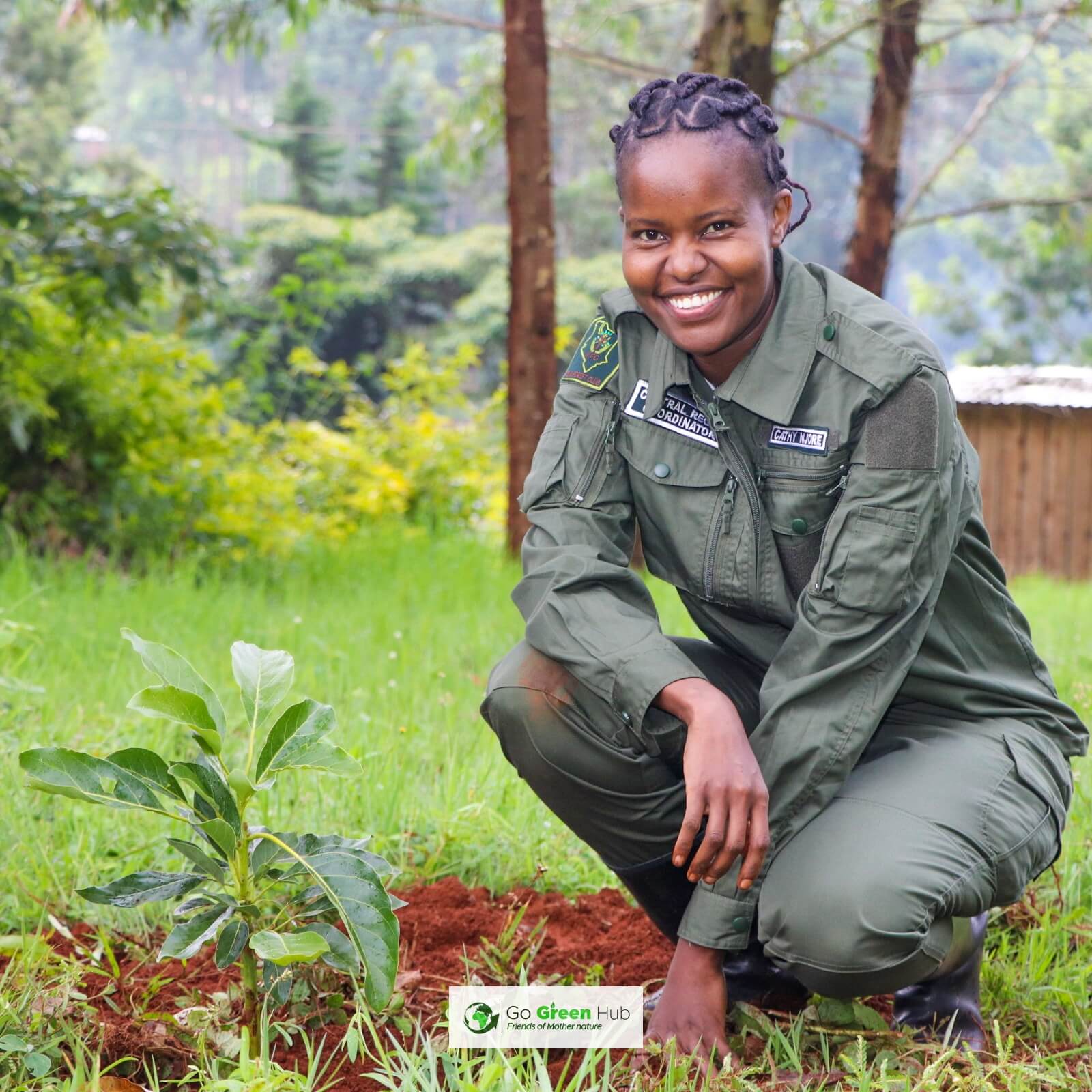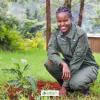With experts across the WILDLABS community working with every type of technology and in every imaginable environment, our platform is a great place to find advice and resources on choosing what tools are right for your conservation project. Whether you're in the market to try a new camera trap model, want to experiment with drones for the first time, or need help weighing the pros and cons of data management tools, there's someone in the WILDLABS community who can help you make a smart and informed choice!
The Community Base is our general gathering group. It's the place where we cover more general, big picture topics in conservation technology - ones that don't fit neatly into our other groups. If you don't know where to post something, just post it in this group. Our moderators will move it if needed!
At our Community Base, you'll find updates from the WILDLABS team on upcoming events and opportunities, and have the chance to shape our programs and platform with your opinions. And most importantly, the Community Base is also home to our Welcome to WILDLABS thread, the best place to introduce yourself to us and the community. Stop by and tell us what you're working on!
Whether you're new to WILDLABS and want to know where to begin, or you're a longtime member looking for a handy bank of resources, our Getting Started on WILDLABS thread will be your one-stop guide to getting the most out of our platform.
Want to find out more about WILDLABS? Check out our recent community call:
Header image: Ana Verahrami/Elephant Listening Project
Group curators
- @StephODonnell
- | She / Her
WILDLABS & Fauna & Flora
I'm the Executive Manager at WILDLABS.



- 152 Resources
- 665 Discussions
- 30 Groups
- @TaliaSpeaker
- | She/her
WILDLABS & World Wide Fund for Nature/ World Wildlife Fund (WWF)
I'm the WILDLABS Research Specialist at WWF-US



- 12 Resources
- 56 Discussions
- 24 Groups
- @EllieW
- | She/Her



- 64 Resources
- 124 Discussions
- 14 Groups
Conservation science advisor & data analyst
- 0 Resources
- 1 Discussions
- 3 Groups
- @jejl
- | Dr
Application of radio astronomy techniques to conservation research, particularly in acoustics.

- 0 Resources
- 7 Discussions
- 4 Groups
BSc Graduate looking for volunteering/work in conservation biology
- 0 Resources
- 0 Discussions
- 4 Groups
Woodland Park Zoo
- 0 Resources
- 5 Discussions
- 2 Groups
- @mariastefoni
- | She/her
Earth worm lover, passionate about the wellbeing of our communities and our planet
- 0 Resources
- 0 Discussions
- 3 Groups
Data Scientist
- 0 Resources
- 6 Discussions
- 13 Groups
- @Tim_Hofmeester
- | he/him
Swedish University of Agricultural Sciences
Researcher studying human-wildlife coexistence -- Camera trapper
- 2 Resources
- 1 Discussions
- 5 Groups
American Museum of Natural History
- 1 Resources
- 7 Discussions
- 10 Groups
- @APooran
- | She/her
- 0 Resources
- 0 Discussions
- 9 Groups
- @flyingfox
- | him
I am a naturalist specialised in wildlife ecology and nature conservation, with experience in international project management, spatial data analysis and remote sensing techniques
- 0 Resources
- 0 Discussions
- 3 Groups
- 0 Resources
- 6 Discussions
- 4 Groups
I'm a Master of Science graduate in Fisheries management and and currently working at Kenya Marine and Fisheries Institute (KMFRI).
- 0 Resources
- 0 Discussions
- 1 Groups
Are you passionate about marine wildlife conservation? Excited to network and collaborate with fellow enthusiasts? Join us in launching the Coastal and Marine Wildlife Working Group within The Wildlife Society!
23 May 2024
Save Our Seas (SOS) opened a call for small grants for 'original and innovative start-up projects' concerning marine chondrichthyan species (sharks, rays, skates, sawfishes and chimaeras). Projects can be in research,...
19 May 2024
Funding
The UK government's 'Reversing Environmental Degradation in Africa and Asia' program opened a call for applications for "locally led, multi-locational, research-to-action for restoration programmes".
19 May 2024
Do you have photos and videos of your conservation tech work? We want to include them in a conservation technology showcase video
17 May 2024
The Biodiversity Finance Initiative ( BIOFIN, a UNDP initiative ) launched a database with over 330 public and private funding opportunities.The Biodiversity Finance Initiative ( BIOFIN, a UNDP initiative ) launched a...
4 May 2024
Article
Read in detail about how to use The Inventory, our new living directory of conservation technology tools, organisations, and R&D projects.
1 May 2024
Article
The Inventory is your one-stop shop for conservation technology tools, organisations, and R&D projects. Start contributing to it now!
1 May 2024
Technology to End the Sixth Mass Extinction. Salary: $132 - $160k; Location: Seattle WA; 7+ years of experience in hardware product development and manufacturing; View post for full job description
1 May 2024
Tap into our new and exciting community-focused conversation series! In this first season of InConversation, we're in East Africa with host Esther Githinji. Listen in as we chat one-on-one with your favourite...
30 April 2024
Article
What better way to conclude InConversation Season 1: East Africa than by delving into the exciting yet complex world of #tech4wildlife innovation across the region. This episode is going to be double the insight and...
30 April 2024
The North Carolina Zoo seeks a dynamic, motivated and progressive individual to serve as the Associate Curator of International Conservation within the zoos’ Conservation, Education and Science (CES) program. The...
29 April 2024
It has been an extraordinary year supporting and growing the regional East African Conservation Technology Community at WILDLABS. We've made great strides and unlocked exciting opportunities for our community as we...
29 April 2024
May 2024
event
June 2024
event
event
October 2024
November 2022
event
event
October 2022
event
| Description | Activity | Replies | Groups | Updated |
|---|---|---|---|---|
| Hello everyone, We are in the process of developing a new MSc in Conservation Technology at my university and would welcome your... |
|
Build Your Own Data Logger Community, AI for Conservation, Autonomous Camera Traps for Insects, Biologging, Camera Traps, Citizen Science, Climate Change, Acoustics, Community Base, Connectivity, Conservation Dogs, Conservation Tech Training and Education, Data management and processing tools, Drones, Early Career, Earth Observation 101 Community, East Africa Community, eDNA & Genomics, Emerging Tech, Ending Wildlife Trafficking Online, Ethics of Conservation Tech, Footprint Identification Technique (FIT), Human-Wildlife Conflict, Marine Conservation, Open Source Solutions, Protected Area Management Tools, Remote Sensing & GIS, Sensors, Software and Mobile Apps, Sustainable Fishing Challenges, Wildlife Crime, Women in Conservation Tech Programme (WiCT) | 12 seconds ago | |
| A practice-based research project: I am carrying out a qualitative research project to better understand the... |
|
Community Base | 5 hours 57 minutes ago | |
| Hello we are Think Nature Inc. from Japan.We, at Think Nature, are a university-launched startup that aims to transform into a nature economy where humans and nature coexist. Our... |
+250
|
Community Base | 12 hours 36 minutes ago | |
| We'll be presenting Wednesday morning as part of session 10.1b on "Integrating earth observations and biological tools in ecology and evolution to cogenerate knowledge towards... |
|
Community Base, Biologging | 1 day 22 hours ago | |
| I noticed the site being annoyingly slow some time last week. Thank you for clearing that up, for finding the cause and solving the issue.I'm not claiming deep knowledge on AI,... |
|
Community Base | 3 weeks 1 day ago | |
| Hello Ms Esther👋Thank you for taking your time to reply to me with such helpful response.I'm interested in conservation technology such as camera traps, GIS and Remote sensing,... |
|
Early Career, East Africa Community, Community Base | 1 month ago | |
| Hi Soumya , Interested to know if you are pursuing distance education in ML while at your current job. I would love to hear more about your journey on course specifics... |
+12
|
Community Base, Early Career | 1 month ago | |
| Totally agree.Inititally sceptical until I saw Helena and Graeme were involved.MJ |
|
Acoustics, Citizen Science, Community Base, Human-Wildlife Conflict | 1 month ago | |
| Hi @Frank_van_der_Most,great point and I will address this in my little talk next week.Greetings from Austria,Robin |
+11
|
Community Base | 1 month ago | |
| I got assistance. super grateful! |
|
Climate Change, Community Base, East Africa Community, Conservation Tech Training and Education | 1 month ago | |
| Awesome, thanks for the summary! |
+8
|
Protected Area Management Tools, Community Base | 2 months ago | |
| @Rob_Appleby follow these instructions to get your Sprout badge! |
|
Community Base | 2 months 1 week ago |
Indianapolis Prize Finalists announced
9 February 2016 4:31pm
New Groups - what's in development and what would you like?
14 January 2016 3:02pm
New article about WILDLABS.NET: Where Technology and Conservation Meet
24 December 2015 4:33pm
Second Tiger Cub Dies in Crimea Zoo After Blackout
7 December 2015 10:31pm
8 December 2015 12:42pm
Hi, Stephanie
"WILDLABS.NET is a community of conservationists, technologists, engineers, data scientists, entrepreneurs and change makers. Together, we share information, ideas, tools and resources to discover and implement technology-enabled solutions to some of the biggest conservation challenges facing our planet. Join the Community to share your knowledge, explore ongoing projects, ask questions and identify major questions and needs. This community is a centralised space for field based conservationists to connect directly with technology experts, to share their challenges and source new ideas for solutions. Connecting with users on the ground will help technologists and innovators to test ideas in field environments, and adapt systems that can accelerate conservation gains. The problems faced by our planet cannot be solved by people working in silos. Become part of theCommunity and work together to build the solutions." (from WILDLABS.NET front page)
Bengal tigers (especially white ones) are identified as endangered species. Blackouts can happen anywhere.. So, as this is a community based on technological solutions, discussions, and sharing ideas and collaborating, I believed someone could have an idea about what can we, as conservationists, do, in order to prevent such loses of endangered species in the zoos, in the future. I'm less interested in politics when it concerns the lives of innocent animals suffering from imperfect conditions in the zoos etc. Any loss of endangered species, anywhere in the world, is a wildlife crime, because we can not afford to let our children live in the world where there's no elephants, rhinos or bengal tigers etc.
On the contrary, this is exactly what I've been saying, that technological innovations (ideas, projects) are exactly what could we all seriously regard in order to solve such problem that happened to the animals in the Crimean zoo. For example, zoos areas could have better equipment with alternative energy generators, or some innovative energy generators. In case of a blackout for example (man-made, natural, technological), in some country for example, it immediately puts at risk the zoos |and the safety and security of its animals|(and not only, but here we discuss environmental issues), for example if it's a cold country: Finland, Russia, Ukraine, Canada etc, on my opinion, I think it would be better if the zoos be equipped with alternative power generators. So, if anyone in the community, have an idea what kind of innovations could be used for the zoos (all over the world) I would be happy to read.
Thank you,
With love,
Sofia
France24.com video segment on wildlife conservation technology
4 December 2015 7:51pm
7 December 2015 11:55am
Thanks for posting Dave - it's a neat overview of lots of different projects. I hadn't seen the SMART hook before, so worth the watch!
Bengal tiger cub dies of cold at Crimea zoo hit by power cuts.
4 December 2015 6:22pm
Bengal tiger cub dies of cold at Crimea zoo hit by power cuts.
4 December 2015 5:36pm
Rare friendship between a tiger and a goat!
4 December 2015 5:29pm
wildtech.mongabay.com is a great resource
2 December 2015 10:40pm
3 December 2015 2:19pm
Thanks for the link - yes, I agree Mongabay's WildTech areas is a great resource for anyone interested in keeping up to date with the latest conservation tech news. Sue Palminteri's article is facinating and is definitely worth a read. The video showing the daily movement of elephants is particularly interesting (see the screenshot below) - it was a case study Katherine Chou of Google.org spoke about in her Fuller Symposium address as well. That they're getting close to real time monitoring is very exciting - it would have been amazing to have that capacity in other projects I've been involved with.
The key take-aways you highlight match a lot of what came up in the Fuller Symposium and other discussions about HWC. The consensus from Wired in the Wild - Can technology save the planet? was that no, it cannot. It is simply a very useful tool that, when used appropriately, could have significant impacts in the challenges conservation is attempting to tackle. Numerous speakers drove home the point that technology is not and should not be the starting point; we need to be technology agnostic. We must start by understanding the challenge and then looking at what (if any) technology might help to address it given the circumstances.
The Elephants and Bees approach is a great example of why we need to start with challenge rather than the technology. Sometimes the best solution is the low tech approach. Nilanga Jayasinghe highlighed this in her thought piece about HWC - giving a similar example of work WWF is doing in Nepal:
'During a recent visit to Nepal, I visited rural villages where wild elephants often raid rice fields during harvest season. The communities had installed electric fences but this tool didn't always succeed on its own. Elephants are smart and persistent: they had learned to break the fence’s electric current, and then the fence itself, by using trees to push over the supporting stakes. To solve this problem, we worked with farmers to dig fish ponds in front of the fences as an additional obstacle. Adding an additional barrier not only made it harder for the elephants to get into the fields, it also gave the communities more time to respond and drive elephants away. This simple solution has not only reduced elephant raids, but has also improved local livelihoods from the sale of the fish grown in the ponds.'

Frequently Asked Questions
30 October 2015 5:43pm
























































8 December 2015 12:11pm
Hi Sofia,
While there is a argument that the death of Bengal Tigers at a zoo in Crimea could potentially be viewed wildlife crime, your original post was unclear about how this was relevant to a professional community that is focused on collaborating and sharing ideas about conservation technology. I would argue that technological innovation might not be the most important element for finding a solution to the problem you have identified. Rather, there are political, social and economic factors that must be addressed as a higher priority, and if addressed effectively, will negate the need for a complex technological solution to this issue.
That being said, I welcome any community member who might be interested to continue the discussion below.
Cheers,
Stephanie